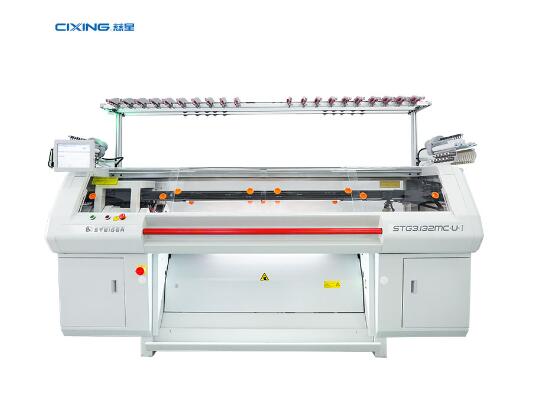Circular vs. Flat Knitting Machines: Crafting Fabrics in the Round and Across Panels
2023-12-20
Introduction:
In the realm of textile manufacturing, the choice between circular and flat knitting machines represents a fundamental decision that significantly influences the characteristics of the final fabric. These machines, each with its unique capabilities, pave the way for diverse fabric production methods. In this blog post, we'll unravel the distinctions between circular and flat knitting machines, exploring how they shape the world of textiles in terms of fabric production.
1. Circular Knitting Machines: Seamless Versatility:
- Continuous Loop Formation:
- Circular knitting machines create fabrics seamlessly in a tubular form.
- The continuous loop formation allows for the production of fabrics without side seams, offering versatility in garment construction.
- Efficiency and Speed:
- Circular machines are known for their efficiency and speed in producing fabrics.
- The absence of side seams reduces the need for additional finishing, contributing to faster production times.
- Ideal for Hosiery and Seamless Garments:
- Circular knitting is well-suited for producing hosiery, socks, and seamless garments.
- The seamless nature of circular knits enhances comfort and minimizes friction points in the final product.
- Inherent Stretch and Elasticity:
- Circular knits often exhibit inherent stretch and elasticity due to the continuous loop structure.
- This makes them suitable for applications where flexibility and comfort are essential.
- Versatility in Stitch Patterns:
- Circular knitting machines offer versatility in creating various stitch patterns.
- They can produce fabrics ranging from simple jersey to more complex cables and textured designs.
2. Flat Knitting Machines: Precision in Panel Production:
- Flat Panel Production:
- Flat knitting machines produce fabrics in flat panels, which are later stitched together.
- Panels can be shaped and manipulated to create intricate patterns and designs.
- Control over Width and Length:
- Flat knitting allows for precise control over the width and length of each panel.
- Designers can create detailed and tailored pieces with specific dimensions.
- Patterned and Intarsia Designs:
- Flat knitting excels in creating patterned designs and intarsia, where different colored yarns are used to create images or motifs.
- The flat panel structure provides a canvas for intricate detailing.
- Varied Stitch Techniques:
- The flat knitting process allows for the incorporation of various stitch techniques, such as cables, lace, and ribbing.
- Designers can experiment with texture and pattern variations.
- Adaptable for Fashion and Accessories:
- Flat knitting is commonly used for producing fashion garments, accessories, and pieces with complex designs.
- It offers precision in creating tailored items with intricate detailing.
3. Differences in Production Techniques:
- Circular Knitting Technique:
- Circular knitting involves needles arranged in a circular formation on a cylindrical needle bed.
- Yarn is continuously fed, creating a seamless tube of fabric.
- Flat Knitting Technique:
- Flat knitting employs needles arranged in a straight line on a flat needle bed.
- The knitting process creates flat panels that are later shaped and assembled.
4. Seamlessness vs. Precision:
- Seamless Finish with Circular Knitting:
- Circular knitting machines produce fabrics without side seams.
- This seamless finish enhances comfort and is well-suited for garments like T-shirts and leggings.
- Precision and Shaping with Flat Knitting:
- Flat knitting allows for precise shaping and control over each panel.
- Designers can create tailored garments with specific contours and detailing.
5. Adaptability to Garment Types:
- Circular Knitting for Basics:
- Circular knitting is often used for producing basic garments, activewear, and everyday essentials.
- Its efficiency makes it suitable for mass production of simple designs.
- Flat Knitting for Fashion and Artistry:
- Flat knitting is favored for fashion-forward pieces and items that require intricate detailing.
- It is well-suited for creating unique, one-of-a-kind designs with a high level of craftsmanship.
Conclusion: Crafting Diversity in Textiles:
The choice between circular and flat knitting machines represents a creative decision in the realm of textile manufacturing. Circular knitting machines offer efficiency and seamlessness, ideal for everyday basics, while flat knitting machines provide precision and artistry, perfect for fashion-forward pieces. As technology advances, the lines between these two methods blur, giving rise to hybrid machines that offer the best of both worlds. In the hands of skilled artisans and designers, the distinctions between circular and flat knitting become threads of creativity, weaving a diverse tapestry of fabrics that adorn our everyday lives.



